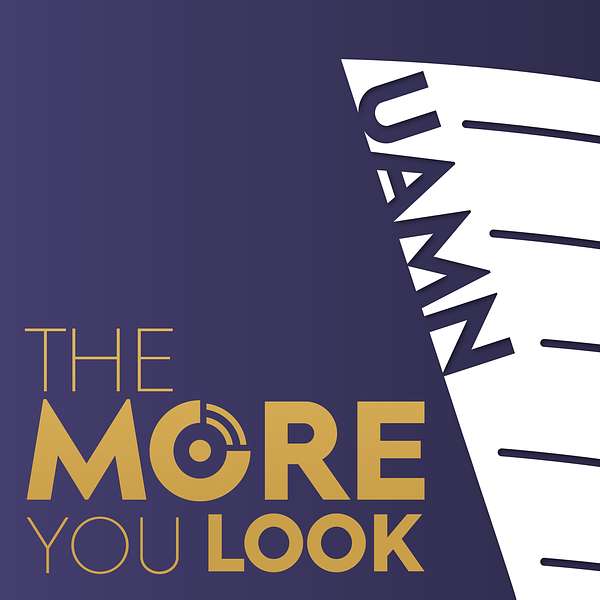
The More You Look
Welcome to The More You Look, a production of the UA Museum of the North and your behind-the-scenes journey into museum collections, research, exhibits, and public programming from Fairbanks Alaska. Join us as we talk about special exhibitions in development, and changes to look for in the permanent galleries. Not just the what, but the how and why. Learn about new programs and new ways to get involved. Curators will discuss the latest field season and collections managers what new finds have come to our labs to be cataloged, studied, and made available to researchers worldwide. We’ll get a look at major projects on the horizon and notable ones from years past. We’ll visit the museum labs–and field camps throughout Alaska and gain a better understanding of not only what this museum is within and without its walls, but quite possibly what discussions take place within any art and natural and cultural history museum that you might venture inside.
The More You Look is now also a KUAC FM radio show.
The More You Look
To Build Connections
UAMN Education & Public Programs offers a wide array of activities and resources for teachers, students, families, community members, and visitors of all ages and backgrounds. Opportunities to learn from, inspiration through museum collections and related research. Through collaboration with UAF departments and the community, this museum department connects the public with Alaska's science, arts, history, and cultures whether through hands-on family programs, school field trip opportunities, workshops, kits to check-out, and more. Here’s our conversation with Jen Arseneau, Director of UAMN Education and Public Programs, and Outreach Specialists: Emily Koehler-Platten, Elisabeth Padilla, and Nan Werdin-Pfisterer.
The More You Look is a production of the UA Museum of the North, on the campus of the University of Alaska Fairbanks and the ancestral lands of the Dena people of the lower Tanana River. UAMN illuminates the natural history and cultural heritage of Alaska and the North through collections, research, education, and partnerships, and by creating a singular museum experience that honors diverse knowledge and respect for the land and its peoples.
